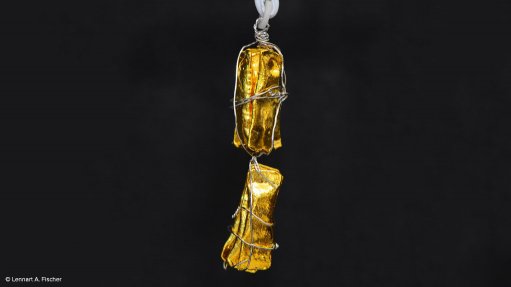
Researchers placed a mixture of iron-ore samples and typical lavas surrounding Kiruna-type deposits, creating a bulk magma composition
Photo by: Lennart A. Fischer
JOHANNESBURG (miningweekly.com) – A study on iron-ore deposits has found that some magmas split into two separate liquids – one of which is rich in iron – and could lead to the discovery of new iron-ore deposits.
The study was published in Nature Communications by researchers, including Bernard Charlier, François Holtz, Ilya Veksler, Zhaochong Zhang, Rainer Thomas and Olivier Namur, from UK-based research institution KU Leuven, Leibniz University Hannover, in Germany, and the University of Liège, in Belgium.
Most iron-ore deposits are found in sedimentary rocks and others are mined in volcanic complexes, such as El Laco, in Chile, and Kiruna, in Sweden.
These iron-ore deposits, called Kiruna-type deposits, account for about 10% of the global production of iron, yet nobody can confirm how they are formed, says KU Leuven.
“Previous studies have always focused on the texture or the composition of natural rocks. We were the first to actually reproduce magmas in the lab, such as the ones found in El Laco,” said Namur, adding that knowing where to look for iron-ore requires an understanding of how the deposits are formed.
He added that the team wanted to reproduce the conditions found in magma chambers, where molten rock accumulates when it can not rise to the surface of the Earth. This is also where the iron-ore deposits beneath volcanoes are formed, so reproducing the temperature and pressure of the magma chambers seemed well worth examining.
“We produced a mixture of iron-ore rich samples and typical lavas surrounding Kiruna-type deposits. This created a bulk magma composition that we believe exists in the deep magma chamber beneath volcanoes.
We placed the mixture in a furnace and raised the temperature to about 1 000 ˚C and increased the pressure to about 1 000 times the atmospheric pressure of Earth – conditions of a magma chamber,” explained Namur.
Under these conditions, the magma split into two separate liquids, a process which is known as immiscibility – similar to oil and water that do not mix.
One of the liquids contained a lot of silica, whereas the other liquid was extremely rich in iron (40%) and phosphorus. When the iron-rich liquid starts to cool down, it forms iron-phosphorous Kiruna-type ore deposits.
“This is the first evidence that immiscibility is key to the formation of iron-ore deposits such as the ones mined in El Laco. If we are right, these findings may help to find new iron-ore deposits, which is necessary to keep up with the global demand for iron,” said Namur.